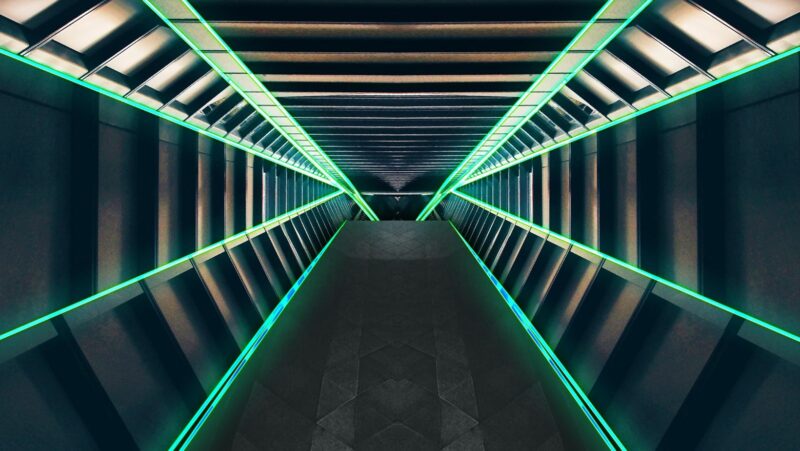Ore distribution in Minecraft 1.19 has changed a lot, and in this post, we’ll go over what you need to know.
Minecraft update 1.19 / 1.18 has changed the way ores are generated – find out the best layers to mine to find them.
The method of ore distribution is created in late-game Minecraft versions, such as 1.19 or 1.18, differs from early Minecraft versions. Ores are now created in “clusters” rather than being spread more uniformly throughout biomes. This implies that some strata will have larger concentrations of ore than others, and miners must be aware of these layers in order to enhance their chances of discovering ores, whether they be gold, redstone, lapis lazuli, or diamond ore.
The lowest three stone layers 0-2, as well as layers 12-13, are the finest four to mine. Diamond ore spawns mostly at lower depths, 5-12 blocks above sea level and below layer 13. Iron is most typically found between layer 5 and layer 59. Redstone spawns between levels 5 to 12 above sea level, with less frequent ores like lapis lazuli or gold found between 14 and 16 blocks above sea level for both gold and lapis lazuli. Miners will have a greater chance of locating important resources without spending time investigating random locations if they grasp the specifics of the revised ore creation algorithm in Minecraft version 1.19/1.18.
Ore levels in Minecraft 1.19
Minecraft version 1.19 adds two new ore layers to the game. It is critical to understand how these levels influence how ore is discovered and mining activities are carried out in the game.
The surface level, which is described as being between 0 and 16 blocks below sea level, is the initial level. This surface layer will include typical amounts of iron, gold, redstone, and lapis lazuli ores in all biomes; diamonds are considerably uncommon and can only be found in Extreme Hills biomes at this level.
The second ore level is sixteen blocks below sea level; and contains diamond ores in somewhat lesser amounts than those found on the surface, however they may also be discovered more seldom in other severe hills biomes at this depth. At this level, redstone and lapis lazuli ores are sometimes discovered combined with diamond ores, with iron and gold ores being more uncommon.
Coal
Coal is the most common mineral in Minecraft 1.19, with modest to large quantities in almost every biome. Coal should be found the most often, particularly near caves and subterranean constructions like fortresses and mineshafts. Coal is a valuable material used in the manufacture, smelting, and powering of energy sources like as furnaces, compaction machines, and blast furnaces.
Players should take advantage of the availability of coal wherever it spawns in order to create the tools required for survival in the Minecraft universe.
Copper
Copper is the second most uncommon resource type in Minecraft 1.19, after only diamond. In this version of the game, copper bricks, ingots, and nuggets may be discovered all throughout the Himalayas. Copper ore veins are most typically discovered at medium depths, however minor veins may be found at the surface or deep below. Copper ore forms in groups of four to eight blocks and is distinguished by its light brown color and sparkling texture.
Copper has more than just ornamental value; making metal into buckets enables you to transport water and lava safely across your globe. Copper tools and armor may also be found at village blacksmiths across the Himalayas biome, making this ore type an essential resource for miners of all skill levels.
Emerald
Emerald ore is one of the most difficult ores to discover in Minecraft. It naturally spawns in vast open air dripstone caverns in the Extreme Hills biome at altitudes ranging from 0 to 16 blocks above sea level. Emerald ore drops one emerald item when mined with a pickaxe, which may be used to construct a range of products and blocks such as elytra and beacon blocks.
Emerald ore may also be recognised by its distinctive lime green block texture, making it simpler to find while players explore and harvest resources. Emerald ore may also be discovered via dealing with villagers, who may sell it in return for an emerald in exchange for other things.
Gold
Gold ore is one of the rarest and most precious ore kinds discovered in Minecraft 1.19, with a spawn rate of less than 0.1% when compared to other ore types. It may be found in tiny areas across all biomes, from the deepest beneath to the surface of the sea. Gold ore only occurs under the surface, mainly between layers 532, and may sometimes yield experience orbs when mined; however, these are normally limited to 25 experience points at a time.
Gold ore will drop one gold ingot each ore block mined when mined with an iron pickaxe or higher equipment, however any lower tier pickaxe would yield nothing. It may also be melted in a furnace to produce a gold ingot, which can be utilized for a variety of purposes, including:
- Armor and weaponry
- Compacted into blocks for more efficient storage of huge quantities of gold
Iron
Iron is a valuable material in Minecraft 1.19 that may be discovered deep beneath the game’s subterranean environment. Minecraft Forge gives players with an easy method to get game materials such as Iron.
Iron ore, in instance, may be found in abundance throughout huge caverns and anywhere there are stone-like blocks. To mine for Iron, players will require a pickaxe constructed from Wood or Cobblestone and acquired from a Crafting Table or powered furnaces for Wood.
Iron ore must be smelted into useable ingots after being mined before it can be utilized to build different items and constructions in the game. To do so, put the ore in a furnace with some fuel charcoal and wait until it has melted into a ready-to-use ingot.
With Minecraft Forge, you can effortlessly access all of these resources in a secure and simple manner, all while conserving valuable gameplay time and allowing you to continue playing and creating fantastic creations.
Lapis Lazuli
Lapis Lazuli is a rare resource found in several biomes across Minecraft 1.19. It is often found between levels 8 and 31, however this varies based on the biome, with some spawning at lower layers and others appearing as high as Layer 32. Lapis spawns exclusively in veins of one block or greater. It may also be acquired by mining old rubbish or bargaining with locals.
Because it is so rare, it is often utilized to create blue dyes and luxury objects such as beacons and other decorations. Because of its scarcity, Lapis Lazuli is typically sought after by more experienced players who have developed the necessary tools to safely locate and mine it, such as:
- A pickaxe with Silk Touch enchantment.
- A fortune enchantment to increase the yield of Lapis Lazuli drops when mining blocks with it.
Diamond
Diamonds are the most expensive resource in Minecraft 1.19 and one of the most sought-after components. The ore is mined by mining Diamond Ore blocks, which spawn between 12 and 16 block levels from the world’s bottom. Each Diamond Ore block gives one Diamond, however the output may be increased by mining it using an Iron or a Diamond Pickaxe. It will not drop anything if mined without a pickaxe.
When mining for diamonds, players must exercise caution since they may be quickly damaged by explosions created by creepers, TNT, or even water and lava flows. It’s also worth noting that diamonds cannot be utilized on their own; they must be combined with crafting recipes and anvils to produce better equipment and armor.
Finally, diamonds are most often discovered in subterranean caverns or ravines, so gamers should keep a look out when exploring these locations:
- Subterranean Caverns
- Ravines
Redstone
Redstone is an ore in Minecraft 1.19 that players may utilize to build many things, including the iconic Redstone Lamp.
If a player is hunting for Redstone, it may be found largely underground in veins between y-levels 8 and 16. These veins are most typically found around mountains in rocky or sandy biomes, although they may also be found in cave systems and underwater.
Redstone, starting of version 1.19, may also be found near exposed water sources or among trees as a renewable ore production system when put alone without other blocks surrounding it. This mineral is known as “Lush Cave,” and the blocks appear at random times with no fixed pattern or regulation. Players should keep an eye out if they want to locate this sort of Redstone, since it may be difficult to find.
Checkout this video:





More Stories
Aether & Aether 2 Minecraft Mod – 1.7.10 / 1.12.2
Thriving Amidst Adversity: A Guide to Success
Get the Better Minecraft Modpack for 1.16.5 and 1.19